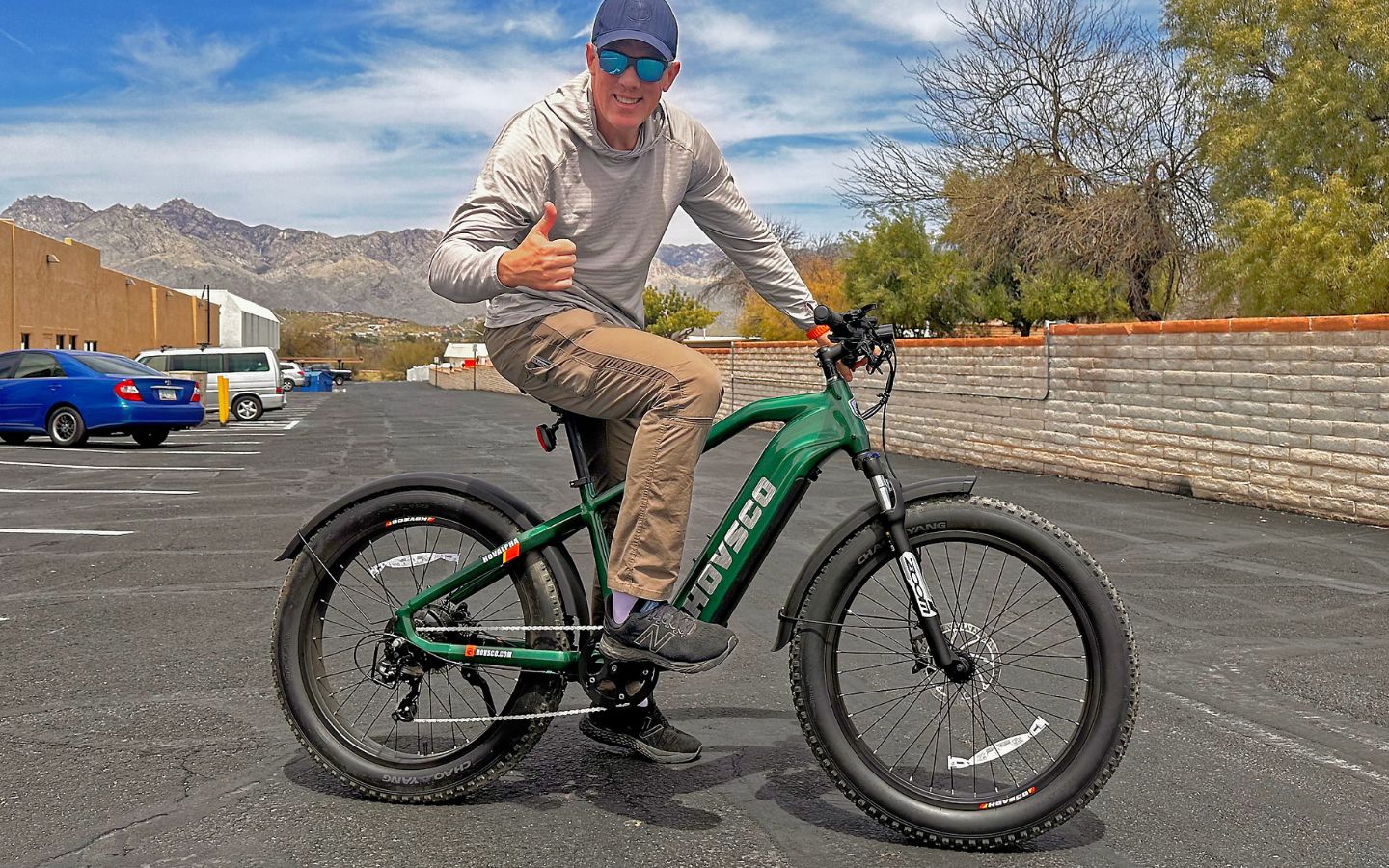
- by HOVSCO Official
Why Maximize Your E-Bike Experience: Essential Tips for Extending Battery Life
- by HOVSCO Official
Maximizing your e-bike experience hinges largely on smart battery management, which includes maintaining charge levels between 20% and 80%, avoiding deep discharges, storing batteries in stable cool environments, and using appropriate assist modes during rides. These practices extend battery lifespan, enhance range, and keep your rides consistently reliable.
The "20-80 Rule" entails keeping your e-bike battery charged between 20% and 80% to reduce stress on battery cells. Charging beyond 80% or discharging below 20% accelerates cell wear, resulting in diminished capacity over time. By adhering to this, battery degradation slows down, preserving overall performance and longevity.
Chart: Battery Charge Levels vs. Cell Stress Over Time
| Charge Level (%) | Cell Stress (Relative Units) |
|---|---|
| 0–20 | High |
| 20–80 | Low |
| 80–100 | Medium–High |
Staying within the 20-80% window optimizes battery health by minimizing the chemical strain on cells. This habit is vital for users looking to maximize the lifespan of their e-bike’s power source.
Deeply discharging your battery — letting it drain completely — can shorten its lifespan drastically. Over-discharging stresses the battery cells causing irreversible damage, which leads to loss in capacity and performance. Instead, recharge once the battery hits around 20%.
Battery manufacturers, including during HOVSCO's rigorous testing, emphasize preventing full depletion to maintain cell integrity and dependable rides over many charging cycles.
E-bike batteries require storage in a cool, dry, and stable environment ideally between 15°C and 25°C to maintain peak health. Exposure to extreme temperatures, direct sunlight, or moisture can cause irreversible battery damage and potential safety hazards.
For extended inactivity — like seasonal storage — batteries should be stored partially charged around 40-60% to prevent cell degradation both from over-discharging and overcharging.
Your riding style deeply impacts battery consumption. Using aggressive acceleration or riding long distances in high assist modes quickly drains battery power. Conversely, smooth pedaling, anticipating stops, and selecting efficient assist modes result in lower energy use and prolong the battery’s functional range.
Moreover, keeping tires properly inflated decreases rolling resistance, requiring less motor effort and preserving battery load.
The choice of assist mode determines how much power the motor consumes. Lower assist settings, such as Eco or Low, rely heavily on your pedaling, thus conserving battery energy. Use these modes on flat terrain or when you want to extend your ride duration.
High assist modes deliver powerful motor assistance but drastically reduce battery life, best reserved for steep climbs or heavy load conditions.
Properly inflated tires reduce rolling resistance, allowing your e-bike to glide smoothly and requiring less battery power. Underinflated tires increase friction and motor strain, accelerating battery drain.
Regularly check tire pressure against manufacturer recommendations before each ride to optimize battery efficiency.
Charging your e-bike battery regularly, rather than waiting for complete depletion, aids in sustaining battery capacity and performance. Always use the original charger specified by the manufacturer to avoid incompatibility and safety issues.
Avoid leaving the battery plugged in continuously after full charge to prevent overcharging damage.
Before any distance or long ride, a full battery charge ensures you maximize your e-bike’s range. Charging up to 100% is appropriate here to provide enough energy for extended trips.
Balance this with the 20-80 Rule by limiting frequent full charges unless necessary for your ride plans.
Temperature extremes—both cold and hot—negatively affect lithium-ion battery chemistry. High heat accelerates chemical reactions leading to faster aging, while cold reduces immediate battery performance and efficiency.
The ideal environment for both usage and storage is a fairly constant room temperature zone between 15°C to 25°C, protected from humidity or direct sunlight.
Purchasing high-quality batteries and compatible chargers directly from trusted brands such as HOVSCO ensures safety, durability, and optimum compatibility.
Look for batteries with clear specifications on capacity (Wh), cycle life, and temperature tolerance. Avoid generic or off-brand chargers which can cause irreversible battery damage. Investing in smart chargers with overcharge protection is recommended for long-term health.
Prioritize models with reliable battery management systems (BMS) that monitor cell voltage and temperature to prevent failures.
"HOVSCO’s dedication to sustainable e-bike innovation underscores the critical role of intelligent battery management. Our team, fueled by a passion for cycling and safety, focuses on educating riders to adopt the 20-80 charging habit, avoid deep discharges, and utilize assist modes strategically. Optimal tire maintenance and temperature-controlled storage are simple yet profoundly effective in extending battery lifespan, ensuring riders enjoy consistent, powerful journeys." — HOVSCO Battery Specialist
Q1: Can I charge my e-bike battery overnight?
A1: It’s best to avoid charging overnight regularly, as prolonged charging after reaching 100% can cause overcharging. Use a smart charger to prevent this if needed.
Q2: How often should I check tire pressure?
A2: Check tire pressure before every ride to reduce rolling resistance and optimize battery use.
Q3: Should I remove the battery when storing the e-bike?
A3: Yes, remove the battery and store it partially charged in a cool, dry place for extended periods.
Q4: Will cold weather damage my e-bike battery?
A4: Cold reduces battery efficiency but typically doesn’t cause permanent damage if you warm the battery before riding.
Q5: How many cycles does an e-bike battery typically last?
A5: Most batteries last 500–1000 full charge cycles, depending on usage and maintenance habits.
Share:
Hovsco HovCart vs. Velotric Packer 1: Which Cargo E-Bike Reigns Supreme?
What Are 5 Electric Bike Charging Tips to Extend Battery Life?